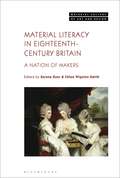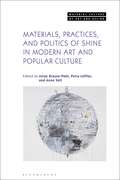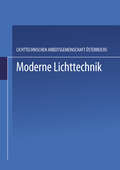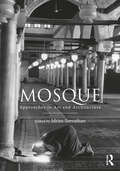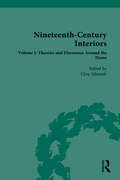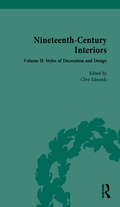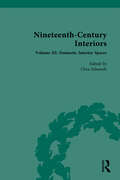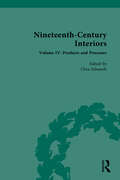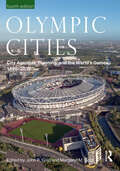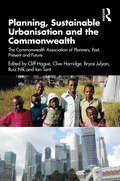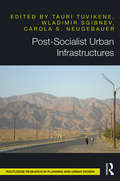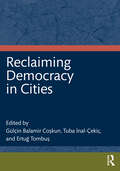- Table View
- List View
Log Cabin (Large Print)
This image shows a gable wall view of a cabin constructed from logs. There is a locator dot shown which will be at the top left of the page when the image is the right way up. The pointed roof fills the top half of the page. The rounded ends of the supporting logs are shown down from the two sloping surfaces of the roof. On the right side of the image there is a crooked chimney sticking out from the roof. Down from the roof is the wall of the cabin. Here the rounded ends of the logs making up the side walls are shown at the left and right edges of the image, and these interleave with the slightly irregular length logs making up the wall shown. In the centre of this wall is a wooden door with a large door knob and ledges above and below it. At each side of the door there is a window with wooden ledges to top and bottom.
Log Cabin (UEB Contracted)
This image shows a gable wall view of a cabin constructed from logs. There is a locator dot shown which will be at the top left of the page when the image is the right way up. The pointed roof fills the top half of the page. The rounded ends of the supporting logs are shown down from the two sloping surfaces of the roof. On the right side of the image there is a crooked chimney sticking out from the roof. Down from the roof is the wall of the cabin. Here the rounded ends of the logs making up the side walls are shown at the left and right edges of the image, and these interleave with the slightly irregular length logs making up the wall shown. In the centre of this wall is a wooden door with a large door knob and ledges above and below it. At each side of the door there is a window with wooden ledges to top and bottom.
Log Cabin (UEB uncontracted)
This image shows a gable wall view of a cabin constructed from logs. There is a locator dot shown which will be at the top left of the page when the image is the right way up. The pointed roof fills the top half of the page. The rounded ends of the supporting logs are shown down from the two sloping surfaces of the roof. On the right side of the image there is a crooked chimney sticking out from the roof. Down from the roof is the wall of the cabin. Here the rounded ends of the logs making up the side walls are shown at the left and right edges of the image, and these interleave with the slightly irregular length logs making up the wall shown. In the centre of this wall is a wooden door with a large door knob and ledges above and below it. At each side of the door there is a window with wooden ledges to top and bottom.
Male Lion (Large Print)
Here is a picture of a lion with his body shown from the side. There is a locator dot shown, which will be at the top left of the page when the image is the right way up. His head is at the left centre facing you, with two ears, two eyes, nose and mouth. The lion has a mane of thick long hair around his head. Lower down the page are the lion's two front legs, and to the right its back legs, all with long claws on the feet. At the right of the lion's body is its tail with a furry end.
Male Lion (UEB Contracted)
Here is a picture of a lion with his body shown from the side. There is a locator dot shown, which will be at the top left of the page when the image is the right way up. His head is at the left centre facing you, with two ears, two eyes, nose and mouth. The lion has a mane of thick long hair around his head. Lower down the page are the lion's two front legs, and to the right its back legs, all with long claws on the feet. At the right of the lion's body is its tail with a furry end.
Male Lion (UEB uncontracted)
Here is a picture of a lion with his body shown from the side. There is a locator dot shown, which will be at the top left of the page when the image is the right way up. His head is at the left centre facing you, with two ears, two eyes, nose and mouth. The lion has a mane of thick long hair around his head. Lower down the page are the lion's two front legs, and to the right its back legs, all with long claws on the feet. At the right of the lion's body is its tail with a furry end.
Material Literacy in Eighteenth-Century Britain: A Nation of Makers (Material Culture of Art and Design)
The eighteenth century has been hailed for its revolution in consumer culture, but Material Literacy in Eighteenth-Century Britain repositions Britain as a nation of makers. It brings new attention to eighteenth-century craftswomen and men with its focus on the material knowledge possessed not only by professional artisans and amateur makers, but also by skilled consumers. This edited collection gathers together a group of interdisciplinary scholars working in the fields of art history, history, literature, and museum studies to unearth the tactile and tacit knowledge that underpinned fashion, tailoring, and textile production. It invites us into the workshops, drawing rooms, and backrooms of a broad range of creators, and uncovers how production and tacit knowledge extended beyond the factories and machines which dominate industrial histories. This book illuminates, for the first time, the material literacies learnt, enacted, and understood by British producers and consumers. The skills required for sewing, embroidering, and the textile arts were possessed by a large proportion of the British population: men, women and children, professional and amateur alike. Building on previous studies of shoppers and consumption in the period, as well as narratives of manufacture, these essays document the multiplicity of small producers behind Britain's consumer revolution, reshaping our understanding of the dynamics between making and objects, consumption and production. It demonstrates how material knowledge formed an essential part of daily life for eighteenth-century Britons. Craft technique, practice, and production, the contributors show, constituted forms of tactile languages that joined makers together, whether they produced objects for profit or pleasure.
Materials, Practices, and Politics of Shine in Modern Art and Popular Culture (Material Culture of Art and Design)
Shine allures and awakens desire. As a phenomenon of perception shiny things and materials fascinate and tantalize. They are a formative element of material culture, promising luxury, social distinction and the hope of limitless experience and excess. Since the early twentieth century the mass production, dissemination and popularization of synthetic materials that produce heretofore-unknown effects of shine have increased. At the same time, shine is subjectified as “glamor” and made into a token of performative self-empowerment. The volume illuminates genealogical as well as systematic relationships between material phenomena of shine and cultural-philosophical concepts of appearance, illusion, distraction and glare in bringing together renowned scholars from various disciplines.
Mosque: Approaches to Art and Architecture
Mosque examines the history, culture, evolution and functions of the Muslim house of worship through the prism of its artistic objects and architectural elements. Contributors present a range of elements, from dome to mihrab, to mosque furniture including lamps, prayer rugs and Qur’an stands. In addition, the book draws attention to the importance of mosque heritage through special projects and initiatives that study, preserve and revitalize the traditional arts of the mosque. This unique book brings together prominent architects, art historians, artists, historians and curators to explore innovative approaches towards the study of mosques through the presentation of original research and insights about mosque-related cultural objects. It is essential reading for anyone interested in the art and culture of the Muslim world.
Mushroom (Large Print)
This is an image of an open-cap mushroom in the middle of the page. The mushroom is the fruiting body of a type of fungus. There is a locator dot shown, which will be at the top left of the page when the image is the correct way up. The mushrooms cap is at the top of the image. It is a warm grey in colour. Down the page from the cap, are the mushrooms gills (lamellae), they are represented as lines radiating from the top of the stem (stipe), which is further down the page. The dark brown lamellae produce spores that will grow into new fungi. The stipe extends down the page and at its bottom it would connect to a network of fine root-like hairs through which the organism absorbs its nutrition. These hairs have not been shown on the diagram.
Mushroom (UEB Contracted)
This is an image of an open-cap mushroom in the middle of the page. The mushroom is the fruiting body of a type of fungus. There is a locator dot shown, which will be at the top left of the page when the image is the correct way up. The mushrooms cap is at the top of the image. It is a warm grey in colour. Down the page from the cap, are the mushrooms gills (lamellae), they are represented as lines radiating from the top of the stem (stipe), which is further down the page. The dark brown lamellae produce spores that will grow into new fungi. The stipe extends down the page and at its bottom it would connect to a network of fine root-like hairs through which the organism absorbs its nutrition. These hairs have not been shown on the diagram.
Mushroom (UEB Uncontracted)
This is an image of an open-cap mushroom in the middle of the page. The mushroom is the fruiting body of a type of fungus. There is a locator dot shown, which will be at the top left of the page when the image is the correct way up. The mushrooms cap is at the top of the image. It is a warm grey in colour. Down the page from the cap, are the mushrooms gills (lamellae), they are represented as lines radiating from the top of the stem (stipe), which is further down the page. The dark brown lamellae produce spores that will grow into new fungi. The stipe extends down the page and at its bottom it would connect to a network of fine root-like hairs through which the organism absorbs its nutrition. These hairs have not been shown on the diagram.
Nineteenth-Century Interiors: Volume I: Theories and Discourses Around the Home
This volume of primary source materials documents the nature of the home and the theories and discussions around the concept. It examines the class divisions that become evident with the ostentatious lifestyles of political and society hostesses at the peak, whilst middle-class housing often in suburbia, seemed to have created a separation of home and work, arguably suggesting men and women lived in separate spheres. Working-class interiors, often seen the eyes of middle-class observers, were at the bottom of the hierarchy and often reflected concerns of social inequality and misery. The documents also address the process of purchasing and decorating a home, advice on decoration and home management, the nature of taste and comfort, and the symbolic roles of the home as an anchor in society. Accompanied by extensive editorial commentary, this collection will be of great interest to students and scholars of art history.
Nineteenth-Century Interiors: Volume II: Styles of Decoration and Design
This volume of primary source materials documents the nineteenth-century search for a representative style, and the alternating fashions for interiors that demonstrated the consumerism of the period. Although in some senses every interior is unique so that a style canon may seem to be meaningless, there have been important historical trends or styles that have influenced individual interiors, and these have formed the groundwork from which other styles and tastes have developed and changed. Accompanied by extensive editorial commentary, this collection will be of great interest to students and scholars of art history.
Nineteenth-Century Interiors: Volume III: Domestic Interior Spaces
This volume of primary source materials documents the spatial layouts of the nineteenth century home as they often became more precisely planned with rooms for specific purposes being developed. The styles began to truly reflect the owner’s taste and position. The range is of course vast from single room dwellings to large-scale mansions and numerous variations in-between. Accompanied by extensive editorial commentary, this collection will be of great interest to students and scholars of art history.
Nineteenth-Century Interiors: Volume IV: Products and Processes
This volume of primary source materials documents the essential practical aspects of making a home, decorating it and then furnishing it. The crucial constitutive parts that make up an interior from floor to ceiling are considered here in detail. The role of advice books and articles that attempted to direct homemakers in particular directions are examined, as are the more practical how-to publications that demonstrated the processes of interior decoration. Accompanied by extensive editorial commentary, this collection will be of great interest to students and scholars of art history.
Öffentliche Kunst, Kunst im öffentlichen Raum Niederösterreich, Band 8: / Public Art Lower Austria, Volume 8 (Veröffentlichte Kunst. Kunst im öffentlichen Raum Niederösterreich Public Art Lower Austria #8)
Kunst im öffentlichen Raum in Niederösterreich ist ein einzigartiges Modell, das international höchste Anerkennung findet. Die im ländlichen und kleinstädtischen Raum entstandenen Projekte bedeutender, aber auch junger unbekannter KünstlerInnen setzen sich mit der Landschaft, der Kulturgeschichte und der Architektur auseinander oder entstanden auf der Basis von sozialer und wissenschaftlicher Recherche. Der vorliegende Band dokumentiert die Projekte der Jahre 2004 – 2006. Neben der Projektdokumentation äußern sich Experten unterschiedlichster Bereiche in einer kunstwissenschaftlichen und theoretischen Diskussion zur "Gestaltung von Kreisverkehren", ein Thema brisanter Aktualität in der Gestaltung von Landschaft und Umgebung.
Olympic Cities: City Agendas, Planning, and the World’s Games, 1896 – 2032 (ISSN)
The first edition of Olympic Cities, published in 2007, provided a pioneering overview of the changing relationship between cities and the modern Olympic Games. This substantially revised and much enlarged fourth edition builds on the success of its predecessors. The first of its three parts provides overviews of the urban legacy of the four component Olympic festivals: the Summer Games; Winter Games; Cultural Olympiads; and the Paralympics. The second part comprises systematic surveys of six key aspects of activity involved in staging the Olympics and Paralympics: finance; sustainability; the creation of Olympic Villages; security; urban regeneration; and tourism. The final part consists of ten chronologically arranged portraits of host cities from 1960 to 2032, with complete coverage of the Summer Games of the twenty-first century.As controversy over the growing size and expense of the Olympics, with associated issues of democratic accountability and legacy, continues unabated, this book’s incisive and timely assessment of the Games’ development and the complex agendas that host cities attach to the event will be essential reading for a wide audience. This will include not just urban and sports historians, urban geographers, event managers, and city planners, but also anyone with an interest in the staging of mega-events and concerned with building a better understanding of the relationship between cities, sport, and culture.
Planning, Sustainable Urbanisation and the Commonwealth: The Commonwealth Association of Planners, Past, Present and Future
By 2050, an additional 2.5 billion people will be living in the world’s towns and cities, almost 50% of them in the 56 Commonwealth countries. To a significant extent, the future of the planet hangs on how cities and human settlements are managed. It is in our cities that the emissions creating climate catastrophe are stoked and where change can – and must – make a difference at scale. Food security, water, basic services, migration, shelter, jobs, environment: sustainable urbanisation is about changing direction to strive for a fairer and less environmentally damaging future. This well-illustrated book by authors from around the Commonwealth tells how the Commonwealth Association of Planners across five decades has campaigned to make a difference. It also looks ahead, scoping the urgent, practical action that is now required.
Post-Socialist Urban Infrastructures (OPEN ACCESS)
Post-Socialist Urban Infrastructures critically elaborates on often forgotten, but some of the most essential, aspects of contemporary urban life, namely infrastructures, and links them to a discussion of post-socialist transformation. As the skeletons of cities, infrastructures capture the ways in which urban environments are assembled and urban lives unfold. Focusing on post-socialist cities, marked by neoliberalisation, polarisation and hybridity, this book offers new and enriching perspectives on urban infrastructures by centering on the often marginalised aspects of urban research—transport, green spaces, and water and heating provision. Featuring cases from West and East alike, the book covers examples from Azerbaijan, Bulgaria, Serbia, Croatia, Germany, Russia, Georgia, Lithuania, Poland, the Czech Republic, Tajikistan, and India. It provides original insights into the infrastructural back end of post-socialist cities for scholars, planners and activists interested in urban geography, cultural and social anthropology, and urban studies.
Reclaiming Democracy in Cities
Effective urban governance is essential in responding to the challenges of inequality, migration, public health, housing, security, and climate change. Reclaiming Democracy in Cities frames the city as a political actor in its own right, exploring the city’s potential to develop deliberative and participatory practices which help inform innovative democratic solutions to modern day challenges.Bringing together expertise from an international selection of scholars from various fields, this book begins with three chapters which discuss the theoretical idea of the democratic city and the real-world applicability of such a model. Part II discusses new and innovative democratic practices at the local level and asks in what way these practices help us to rethink democratic politics, institutions, and mechanisms in order to move toward a more egalitarian, pluralist, and inclusive direction. Drawing on the Istanbul municipal elections and the Kurdish municipal experience, Part III focuses on the question of whether cities and local governments can lead to the emergence of strong democratic forces that oppose authoritarian regimes. Finally, Part IV discusses urban solidarity networks and collaborations at both the local level and beyond the nation, questioning whether urban solidarity networks and alliances with civil society or transnational city networks can create alternative ways of thinking about the city as a locus of democracy.This edited volume will appeal to academics, researchers, and advanced students in the fields of urban studies, particularly those with an interest in democratic theory; local democracy; participation and municipalities. It will also be relevant for practitioners of local governments, NGOs, and advocacy groups and activists working for solidarity networks between cities.
Romany caravan (Large Print)
This image shows the side view of a painted Romany caravan. There is a locator dot shown, which will be at the top left of the page when the image is the right way up. At the lower left of the image, four steps lead up to a door at the rear end of the caravan, which is not visible in this image. To the right of the steps at the bottom of the image, two of the caravan's four spoked wheels can be seen with the larger on the left. Above the small wheel on the right is the supporting frame upon which the axle turns. The axle cannot be shown. Above the wheels, decorative columns are shown on the panelling of the caravan, leading up to two windows with open shutters. The painted wooden roof sticks out beyond the body of the caravan at the top of the image, particularly at the back.
Romany caravan (UEB Contracted)
This image shows the side view of a painted Romany caravan. There is a locator dot shown, which will be at the top left of the page when the image is the right way up. At the lower left of the image, four steps lead up to a door at the rear end of the caravan, which is not visible in this image. To the right of the steps at the bottom of the image, two of the caravan's four spoked wheels can be seen with the larger on the left. Above the small wheel on the right is the supporting frame upon which the axle turns. The axle cannot be shown. Above the wheels, decorative columns are shown on the panelling of the caravan, leading up to two windows with open shutters. The painted wooden roof sticks out beyond the body of the caravan at the top of the image, particularly at the back.
Romany caravan (UEB uncontracted)
This image shows the side view of a painted Romany caravan. There is a locator dot shown, which will be at the top left of the page when the image is the right way up. At the lower left of the image, four steps lead up to a door at the rear end of the caravan, which is not visible in this image. To the right of the steps at the bottom of the image, two of the caravan's four spoked wheels can be seen with the larger on the left. Above the small wheel on the right is the supporting frame upon which the axle turns. The axle cannot be shown. Above the wheels, decorative columns are shown on the panelling of the caravan, leading up to two windows with open shutters. The painted wooden roof sticks out beyond the body of the caravan at the top of the image, particularly at the back.

